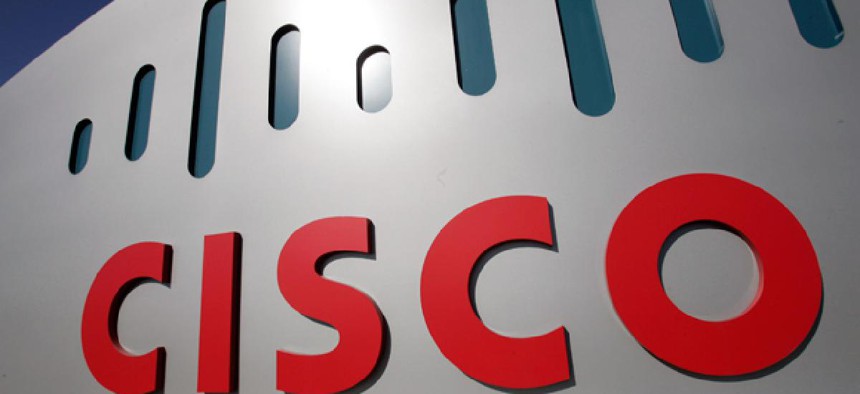Cisco takes on rogue suppliers with device to ID counterfeit parts

Paul Sakuma/AP File Photo
The computer equipment manufacturer has long struggled to keep agencies from installing Chinese-made bogus components.
Computer equipment maker Cisco soon will release a tool that automatically detects imitations of its branded products on federal customer systems, a Cisco executive told Nextgov.
For years, many U.S. agencies unwittingly have bought and installed counterfeit Cisco goods from retailers, jeopardizing the security of government networks, according to the company and federal authorities. Procurements of fake hardware and software are a growing problem governmentwide, notably within the Pentagon. After ordering military-grade electronics between August 2011 and February 2012, undercover agents with the Government Accountability Office received 40 price quotes for bogus parts from online retailers based in China.
“There are rogue partners out there that represent themselves as Cisco partners and they are not,” Patrick Finn, Cisco senior vice president for the public sector, said during an interview. “We are working with the customer to ensure that when they buy a piece of Cisco equipment it is a piece of Cisco equipment.”
Weeding out forged routers and switches “has been something that’s been a focus for us” on the supply chain side of the business, he said. Some of the fraudulent branding comes from China, Finn added.
Cisco reports that one government department bought apparent Cisco routers from a reseller that, upon investigation of serial numbers, turned out to be lower quality products with expired warranties modified to look highly secure. The department believed the items were authentic because they arrived in sealed boxes and seemed new. In a separate 2008 case, the Justice Department alleged that the Marine Corps, Air Force, Federal Aviation Administration and FBI were sold faux Cisco goods originating in China.
The number of suppliers trafficking in risky electronics headed for the government, including counterfeit products, has surged 63 percent during the past decade, according to an Oct. 29 analysis by supply chain research group IHS. In 2002, 5,849 vendors were reported distributing suspect items and in 2011, the population of fraudsters had grown to 9,539 suppliers.
Do you want to know more about the outlook for federal IT in 2013? Attend Nextgov Prime on Monday, Dec. 3, where key lawmakers will outline their plans for reforming the way agencies buy technology. Our expert panels will discuss the future of cloud computing, cybersecurity, data analytics and more.



